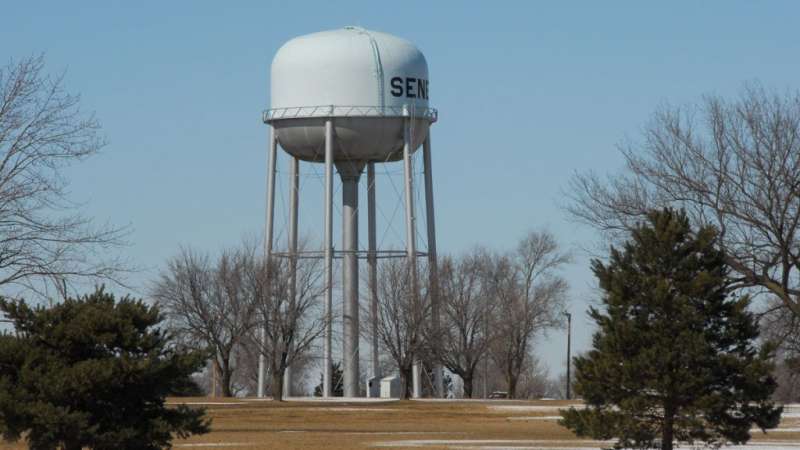This article has been reviewed according to Science X's editorial process and policies. Editors have highlighted the following attributes while ensuring the content's credibility:
fact-checked
peer-reviewed publication
trusted source
proofread
US public water supply is a local source of phosphorus pollution, finds study

In the United States, public water systems are sometimes dosed with phosphate to reduce copper levels and lead pipe corrosion. This practice can help avert humanitarian disasters like the Flint water crisis, but because phosphorus can contribute to eutrophication, it could harm local aquatic ecosystems.
For example, phosphorus that enters the environment when pipes leak or people water their lawns may find its way into rivers, lakes, and groundwater. Exactly how much phosphorus enters the environment from the public water supply, though, is unknown, making it difficult to address this source of pollution.
Flint and colleagues estimate for the first time how much phosphorus enters the environment from the U.S. public water supply. Using data from 2015, the team analyzed phosphate dosing concentrations, data from public water system facilities, the volume of water supplied by these facilities, and estimates of how much water is lost because of leakage and outdoor water use.
They found that about 3% of public water systems in the United States in 2015 dosed their water with phosphate. Because larger systems were more likely to use phosphate, about a quarter of the U.S. population received dosed water. The practice was more common in the Midwest and the East, where many counties retain legacy lead piping.
About 5%–17% of dosed water leaked out of water mains, and 5%–21% was used outdoors. Even at the lower end of these estimates, in some counties the phosphorus that entered the environment from the water supply could exceed phosphorus coming from point sources like wastewater treatment plants or diffuse sources such as agricultural fertilizer use.
The public water supply typically isn't included in phosphorus source apportionment studies, and the authors hope their new findings can help policymakers develop more effective phosphorus management strategies.
The findings are published in the journal Global Biogeochemical Cycles.
More information: Elizabeth M. Flint et al, Watermains leakage and outdoor water use are responsible for significant phosphorus fluxes to the environment across the United States, Global Biogeochemical Cycles (2023). DOI: 10.1029/2022GB007614
Journal information: Global Biogeochemical Cycles
Provided by American Geophysical Union
This story is republished courtesy of Eos, hosted by the American Geophysical Union. Read the original storyhere.





















